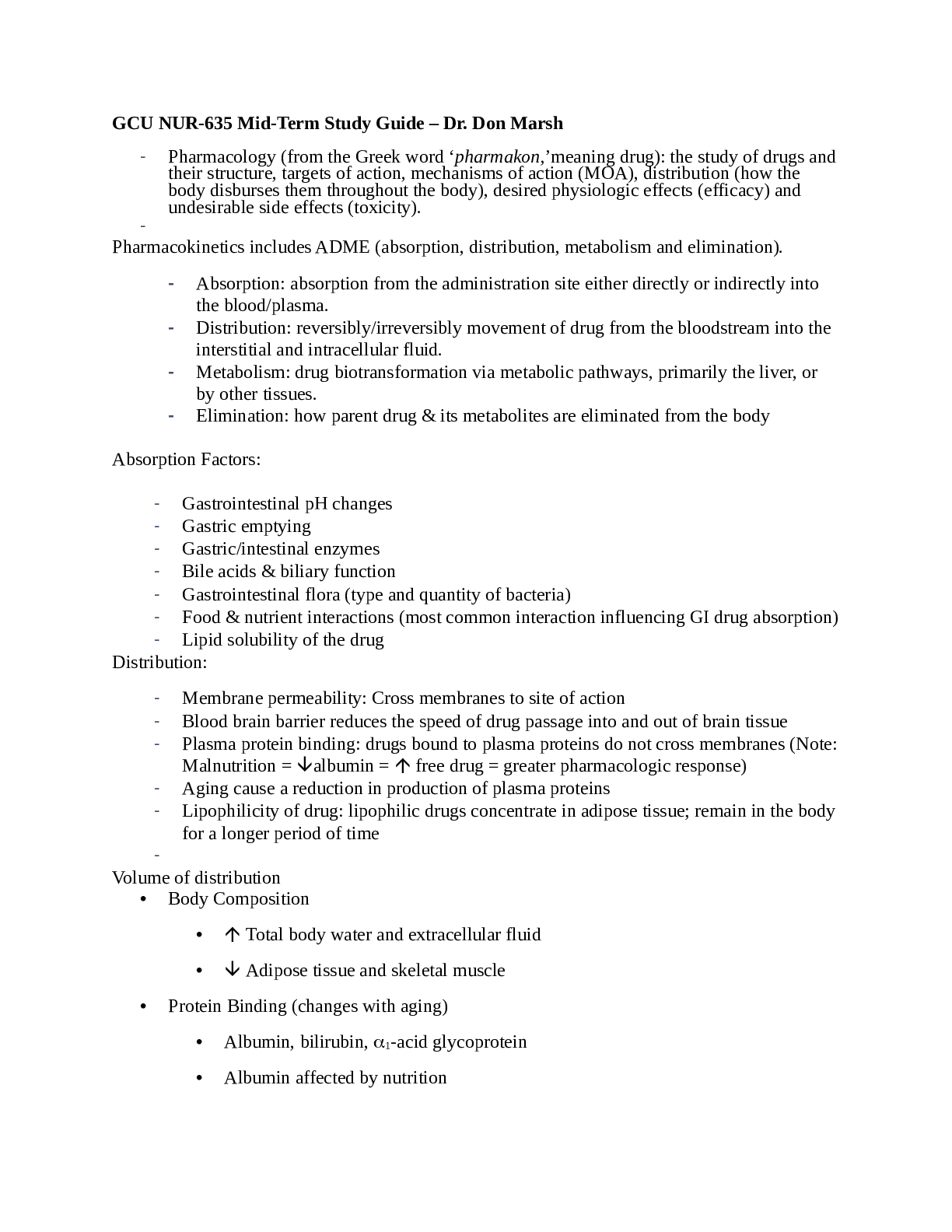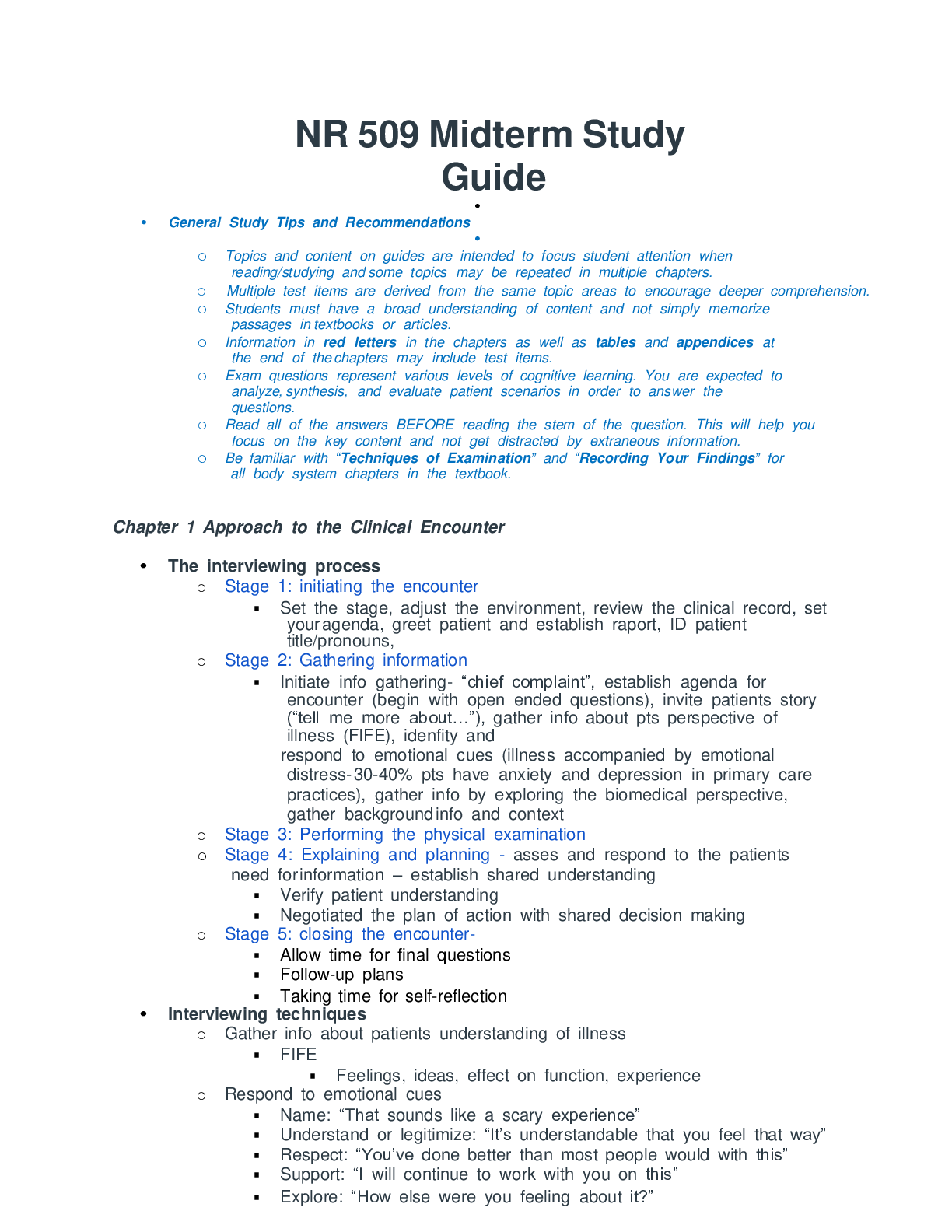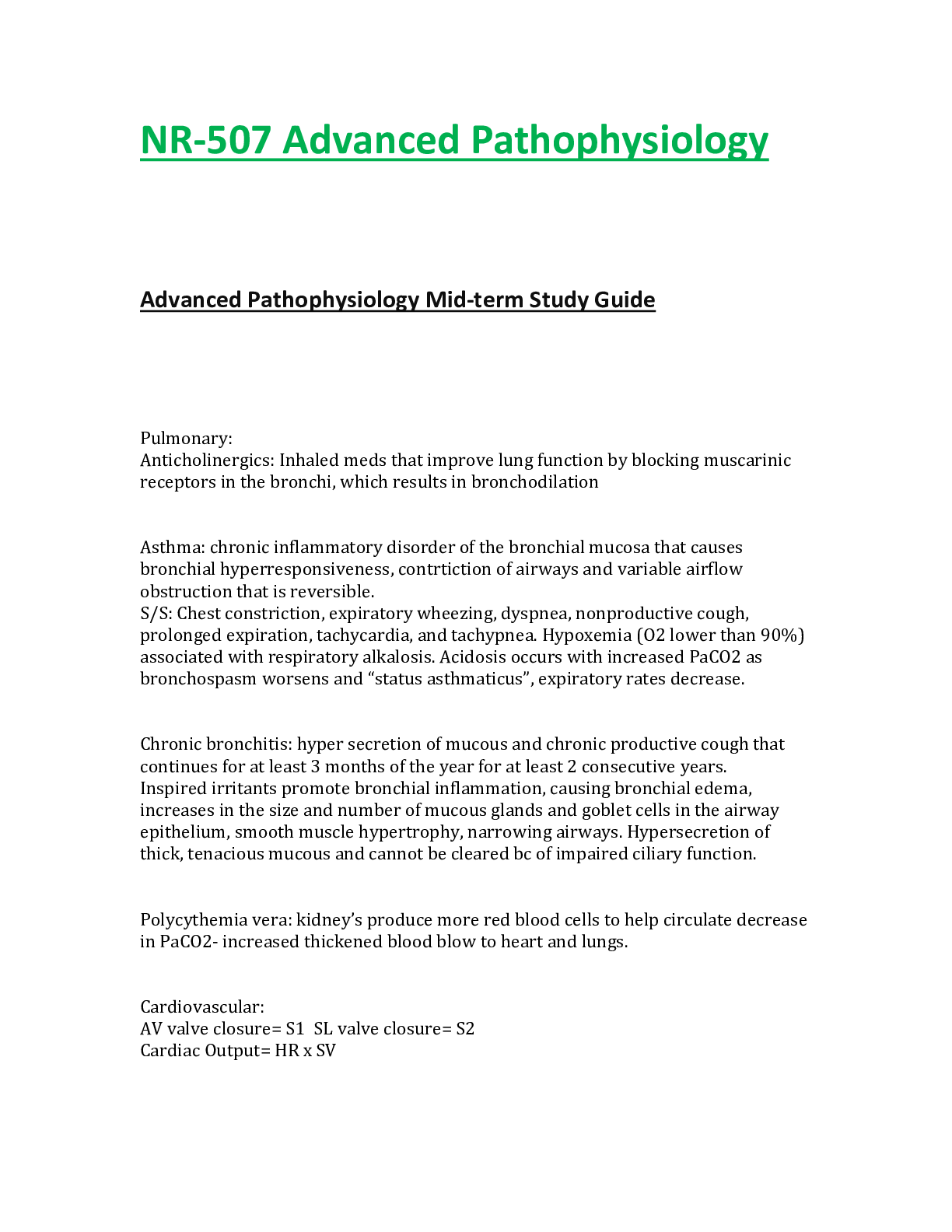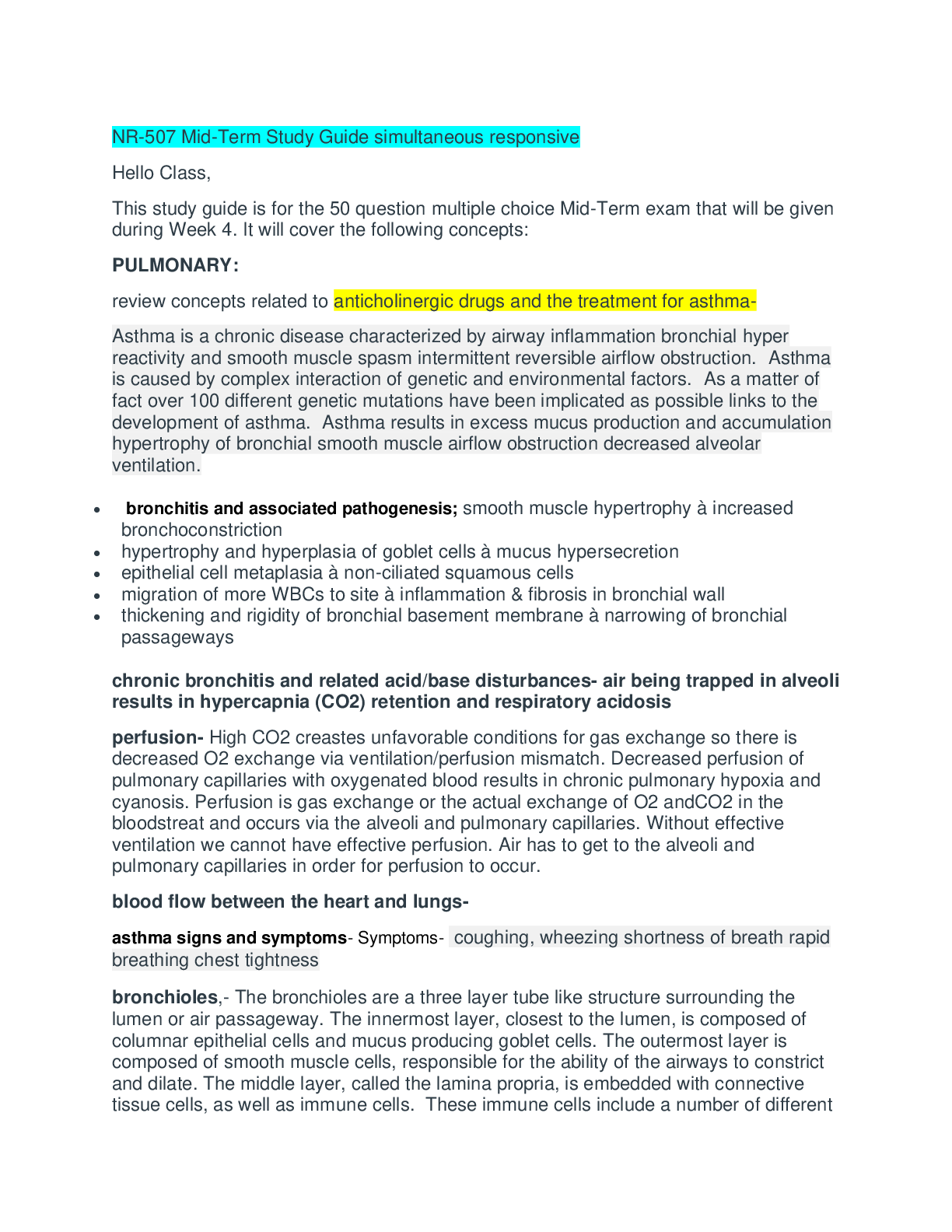*NURSING > STUDY GUIDE > GCU 635 Mid-Term Study Guide Fall 2019 (All)
GCU 635 Mid-Term Study Guide Fall 2019
Document Content and Description Below
- Pharmacology (from the Greek word ‘pharmakon,’meaning drug): the study of drugs and their structure, targets of action, mechanisms of action (MOA), distribution (how the body disburses them thro... ughout the body), desired physiologic effects (efficacy) and undesirable side effects (toxicity). - Pharmacokinetics includes ADME (absorption, distribution, metabolism and elimination). - Absorption: absorption from the administration site either directly or indirectly into the blood/plasma. - Distribution: reversibly/irreversibly movement of drug from the bloodstream into the interstitial and intracellular fluid. - Metabolism: drug biotransformation via metabolic pathways, primarily the liver, or by other tissues. - Elimination: how parent drug & its metabolites are eliminated from the body Absorption Factors: - Gastrointestinal pH changes - Gastric emptying - Gastric/intestinal enzymes - Bile acids & biliary function - Gastrointestinal flora (type and quantity of bacteria) - Food & nutrient interactions (most common interaction influencing GI drug absorption) - Lipid solubility of the drug Distribution: - Membrane permeability: Cross membranes to site of action - Blood brain barrier reduces the speed of drug passage into and out of brain tissue - Plasma protein binding: drugs bound to plasma proteins do not cross membranes (Note: Malnutrition = albumin = free drug = greater pharmacologic response) - Aging cause a reduction in production of plasma proteins - Lipophilicity of drug: lipophilic drugs concentrate in adipose tissue; remain in the body for a longer period of time - Volume of distribution • Body Composition • Total body water and extracellular fluid • Adipose tissue and skeletal muscle • Protein Binding (changes with aging) • Albumin, bilirubin, ?1-acid glycoprotein • Albumin affected by nutrition • Low albumin (hypoalbuminemia) can cause less protein-bound drug reaching the tissue site of action. • Tissue Binding • Compositional changes Metabolism: • Drugs can undergo metabolism in the lungs, blood, liver, intestines and kidney • Volatile drugs are primarily excreted by the lungs • The body changes drugs to more or less active forms (metabolites), increases water solubility to increase elimination. Phase I Metabolism: • Cytochrome P450 system • Located within the endoplasmic reticulum of hepatocytes. • Through electron transport chain, a drug bound to the CYP450 system undergoes oxidation or reduction. • Drug metabolism in the liver is also affected by: • Enzyme induction • Drug interactions CYP450: • CYP: a set of isozymes primarily found in the liver and GI tract • Convert lipophilic drugs into more polar (and soluble) molecules • Four isozymes are responsible for the majority of Phase I reactions 1. CYP3A4/5 2. CYP2D6 3. CYP2C8/9 4. CYP1A2 • Considerable genetic variability exists across race and gender • Results in CYP450 polymorphisms which have a direct effect on drug metabolism. • If you have a patient experiencing a pharmacokinetic drug interaction, consider CYP450. • Some drugs or exogenous substances can induce CYP isozymes (less effect) • Example: St. John’s wort (CYP3A4) and hormonal birth control ............................................Continued......................................................... [Show More]
Last updated: 2 years ago
Preview 1 out of 29 pages
.png)
Buy this document to get the full access instantly
Instant Download Access after purchase
Buy NowInstant download
We Accept:

Reviews( 0 )
$18.50
Can't find what you want? Try our AI powered Search
Document information
Connected school, study & course
About the document
Uploaded On
Apr 24, 2021
Number of pages
29
Written in
Additional information
This document has been written for:
Uploaded
Apr 24, 2021
Downloads
0
Views
92

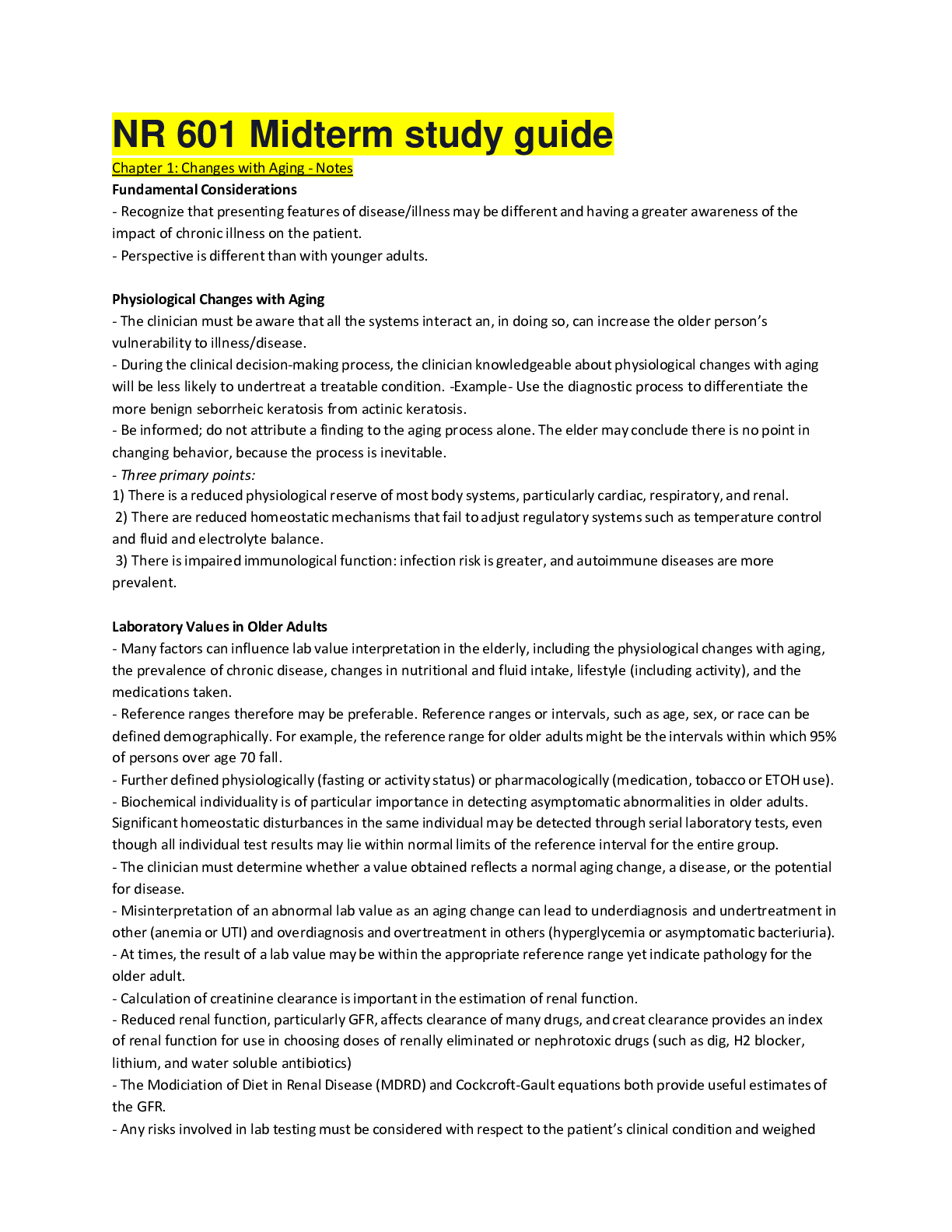

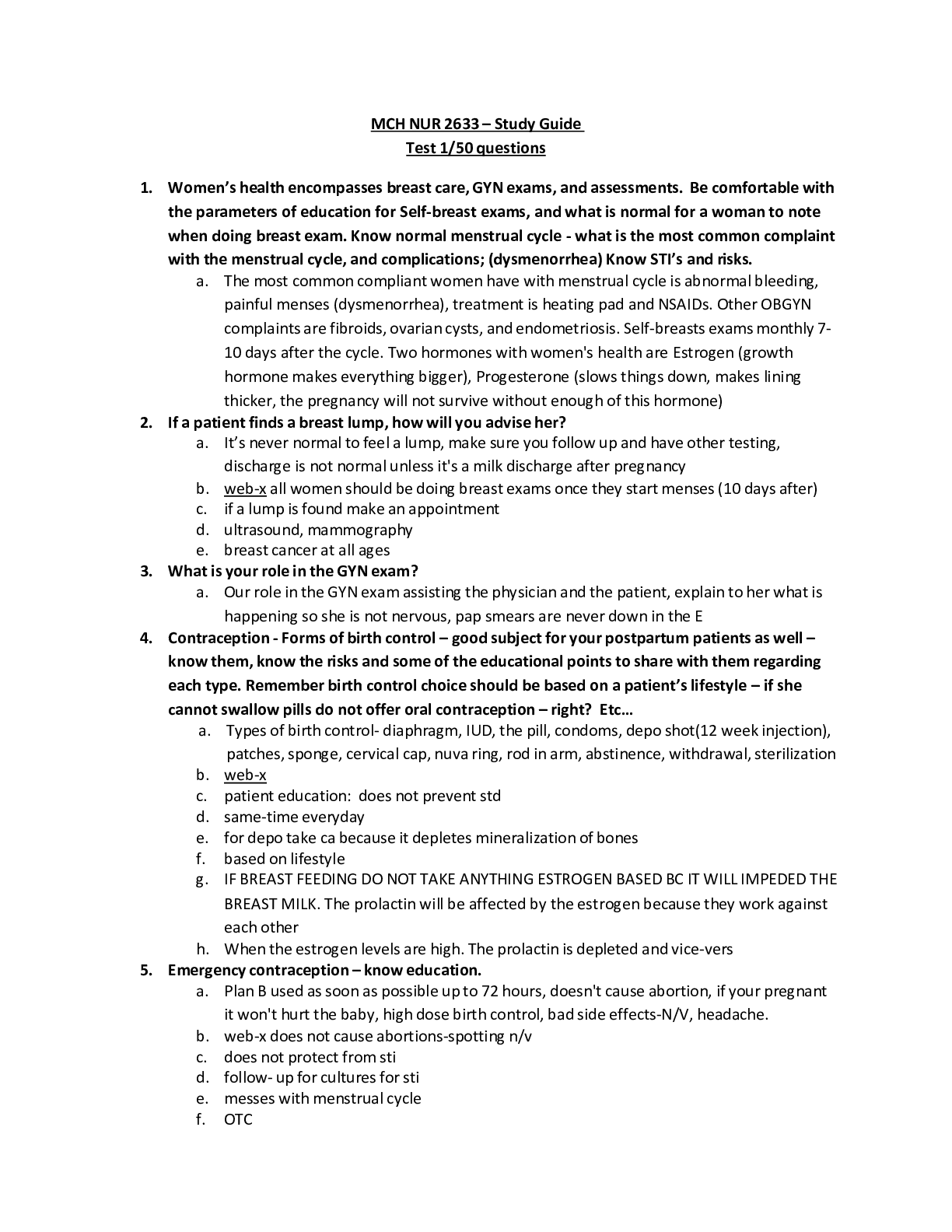








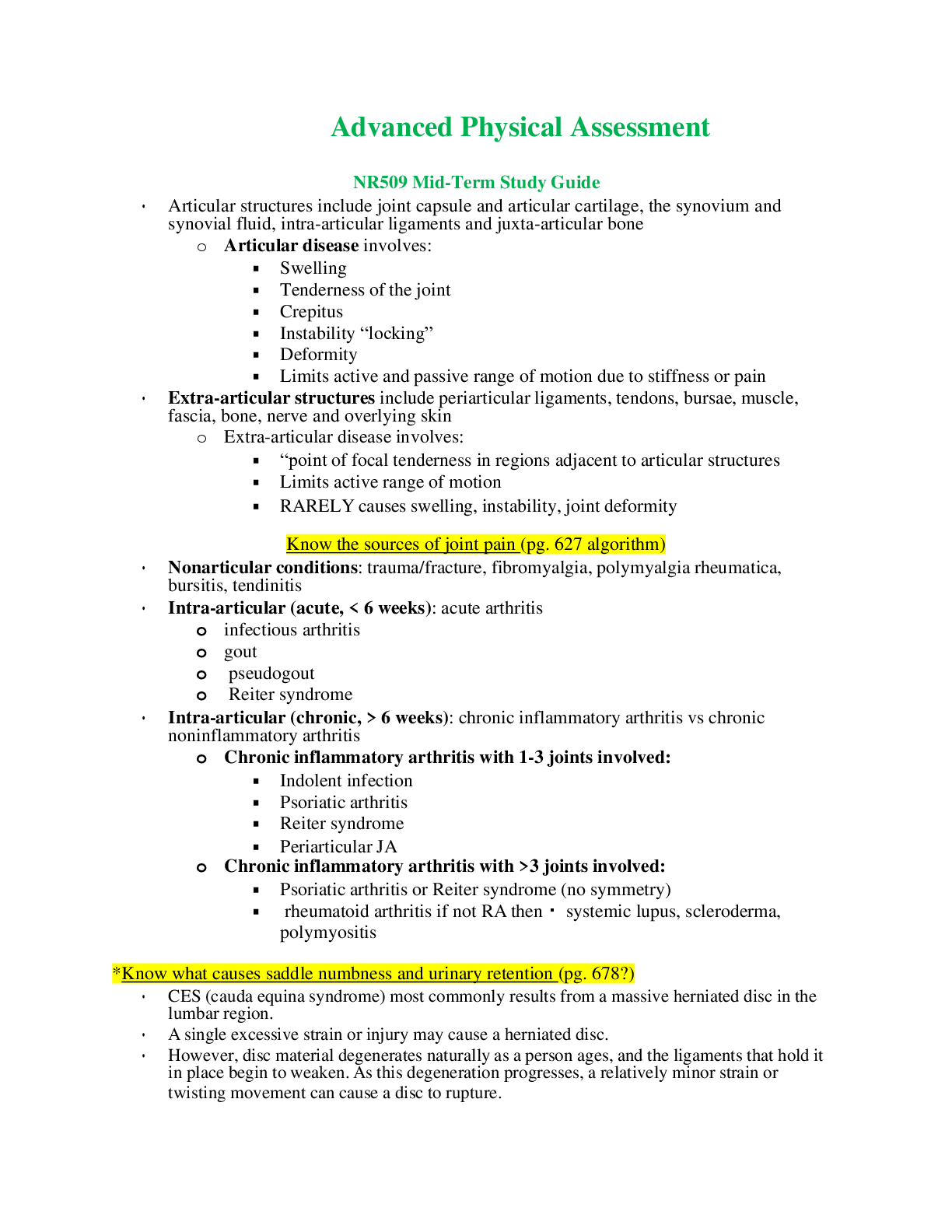
.png)
